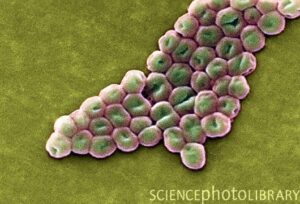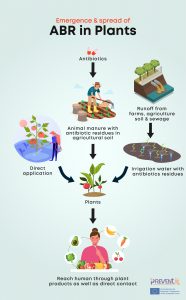The increasing issue of antibiotic resistance is a great challenge to the pharmaceutical industry. The pressure of developing newer, better compounds with capacity to kill or inhibit the growth of antibiotic resistant organisms is huge. In this direction, nanoparticles are gaining a lot of attention. For instance, the use of sulfidated nanoscale zero-valent iron has been successfully used for wastewater treatment plants as they can remove the antibiotic resistance genes. However, research has shown that the use of naturally synthesized nanoparticles has better efficacy than chemically synthesized nanoparticles. Thus, now attention of pharmacy and medicine is more towards the use of green nanotechnology than other measures.
In this regard, microbes have been exploited at a larger scale. But the key challenge appears to be the mode of production and if the bacterial synthesis of nanoparticles is extracellular, the chance of getting higher production through supernatant, cell-free extract, and derivative components is high. On the other hand, use of plant derived nanoparticles seems to overcome the challenge quite easily. This technology uses plants that are convenient ‘eco-friendly nano-factories’. To name a few, Curcuma longa, Catharanthus roseus, Zea mays, Phyllanthus reticulatus are having antibacterial activity. Moreover, the use of antimicrobial nanomaterials has been explored for their potential against multi-drug resistant organisms as well as prophylactic measures in the form of disinfectant. Sadly, the application of nanoparticles as part of therapeutic strategies for human diseases is limited by their toxicity. The laboratory studies have shown their negative impact on cell cultures viz. red blood cells, human peripheral blood mononuclear cells, liver cells, human bronchial epithelial cells, human umbilical vein endothelial cells, immortal human keratinocytes, etc. Therefore, the current approaches are focusing on how to counteract the toxicity. The idea of using nanoparticles in combination therapy is also on the platform.
The current review article by Uppal et al. (2022) focusses on similar lines discussing pros and cons of various nanoparticles and brings into picture that plant-based nanoparticles seem much more fruitful as a future therapeutic approach. To learn more, please visit the website of Science of the total environment (link).







